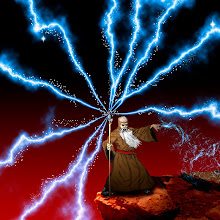Another new addition to the quiver in CS 5 was the ability to taper individual strokes. The Profile drop-down in the Stroke Pallet offers several options to manipulate a line width along a path. Width Profile 4 is very useful for achieving a tapered stream style in a hydrological network. It will taper any stroke from the set point size at one end, down to a finite point at the other. In addition, the Width Tool allows you to modify that taper at any point along the line, allowing you symbolize rivers in a much more natural way. Combine with stream classes from GIS attributes, and one can create a realistic branching network that tapers from a trickle at the headwaters and expands to a torrent at the outlet. Incorporate this trick into your next map, and set it apart from the rest. The video lays it all out.
Tuesday, October 11, 2011
Shape Builder Tool in Illustrator
Trimming a lot of lines to a map extent has always been a real challenge in Illustrator. And there always seem to be extras coming out of GIS! There have been a number of third party plug-ins over the years like the Graffix cutting tools, but those no longer work in CS 5. The kind folks at the Swiss Federal Institute of Cartography (ETH) have a nice set of tools, including the Area Builder that does the job, but all the menus are in German (Google Translator sorts that out quickly). But now, Adobe has granted us the Shape Builder Tool, which natively joins overlapping polygons, like separated lakes, or creates polygons from overlapping linework. In its negative function, it can cut dangles right to our map frame, which is all we could have ever hoped for. Watch the video for a short demonstration of this practical and powerful tool.
Wednesday, September 28, 2011
Custom Shaded Relief in ArcMap
A clean hillshade is only the beginning when constructing a realistic depiction of landscapes for a map. After you have the shaded relief dialed, you need to spice it up a bit with some landcover, and maybe some prominent features like glaciers (if you’re lucky enough to have them). That’s exactly what is demonstrated in the video below. Through the use of layers and transparencies, it is possible to break up the even stretch of a color ramp and add some texture to the scene. There is no “absolute rule” for the combinations of settings that make for a beautiful custom relief. But that’s the fun – experimenting with every option until you achieve the right look. Here are some tips to start, it’s your job to play through to the end.
Swiss Hillshade Model in ArcMap
The iconic Swiss cartographer, Eduard Imhof felt that the base of almost all maps was the relief representation. He further remarked that the “proper rendering of relief is one of the primary tasks in cartography” (Imhof 1982). In the modern digital workflow, rendering relief is as simple as clicking the mouse a few times. But is it “proper,” as professor Imhof would say? With high resolution data, stock relief shading tends to be a complex cacophony of overly detailed valleys and ridges. Like all of cartography, a little generalization can be good. With relief, the ideal would be to highlight the most important features in the landscape, subdue the complex terrain, and brighten the darkest recesses were detail is lost in shadow. The ESRI Mapping Center provides a free Swiss Hillshade model that simulates hand painted relief in a digital workflow. It’s not perfect, but is a great place to start! I have also modified it a little to meet my needs and you can download my version here. The video will get you started on technique, buts it’s well worth grounding yourself in theory on this excellent site. Happy mapping!
Sunday, September 25, 2011
Mosaicing DEMs in ArcCatalog
For many years merging multiple DEMs into a seamless scene was a mystery, then just a hassle. It took many, many raster calculations, adding one at a time to get there. But now, it’s a snap. All we have to do is create a blank raster that has the same bit depth as the original, then load all the tiles in. ArcCatalog automatically mosaics them all together, producing a clean DEM, sans the joins, ready to go for our shaded relief fix. Watch the video, it’s a breeze! Correction from the video: National Elevation DEMs (NED) are 1-Arc Second 30m, 1/3-Arc Second 10m, and 1/9-Arc Second 3m. Most of Alaska is covered by 2-Arc Second 60m DEMs. They can all be downloaded at the USGS Seamless Server.
Friday, September 2, 2011
Graphic Styles in Illustrator
Well the masters is finished and it’s time to start the blog up again! In honor of my first cartography lab as an adjunct professor, here’s a quick lesson in setting up graphic styles in Illustrator. Graphic styles allow the cartographer to quickly style raw data exported from a GIS or other source. In production workflow, were each map has a related theme, or all maps for a project need to have a consistent look, styles function as a continuity template that ensures symmetry throughout a project. They also form a solid basis for alteration and experimentation of one-off maps. A word of warning needs to be inserted; cartographers that use the same master template to begin each map, tend to always produce maps that look the same. Therefore, you must force yourself to constantly create new styles, modify existing ones, and combine various styles from different projects. The benefit of styles is that you can recreate the look of a map quickly, and then move beyond the original without having to spend countless hours relearning techniques. For those that prefer to read it, here is a short and sweet tutorial. Enjoy!
Subscribe to:
Comments (Atom)


